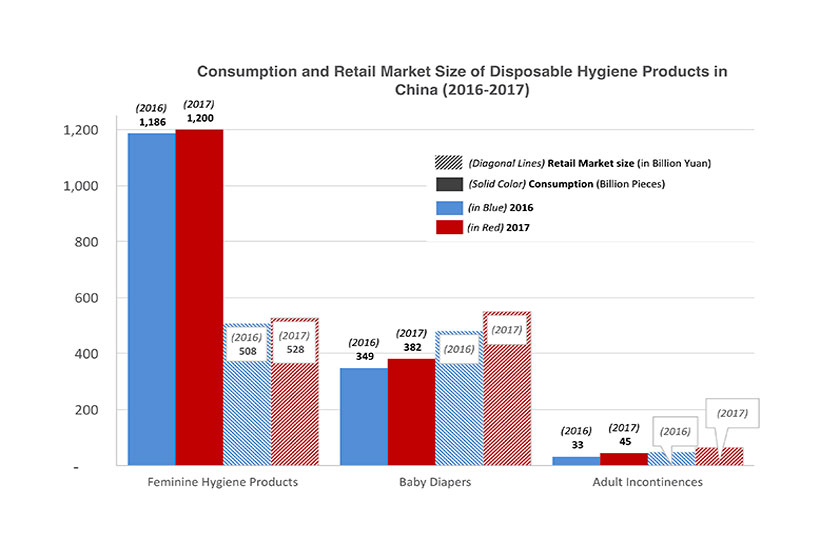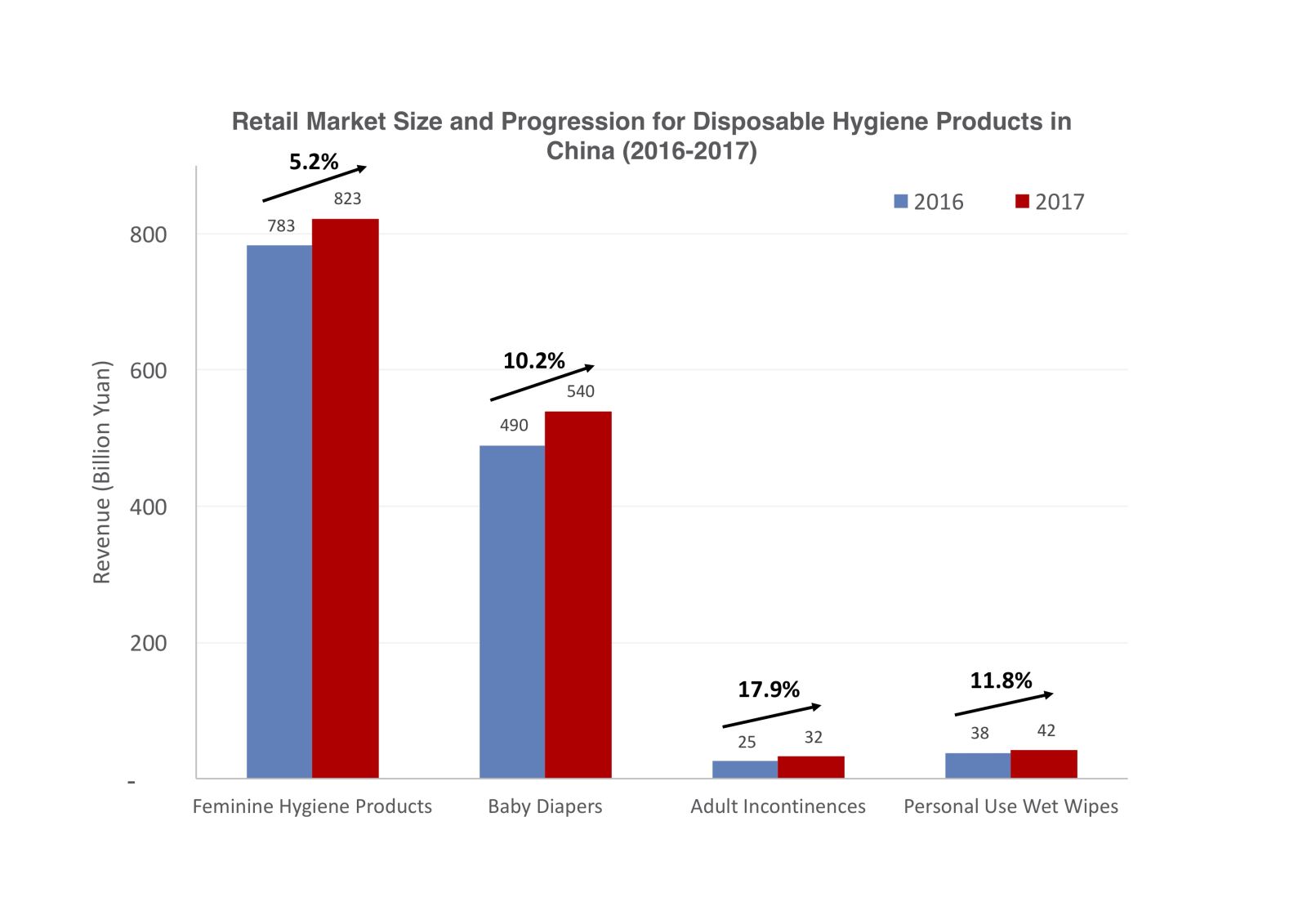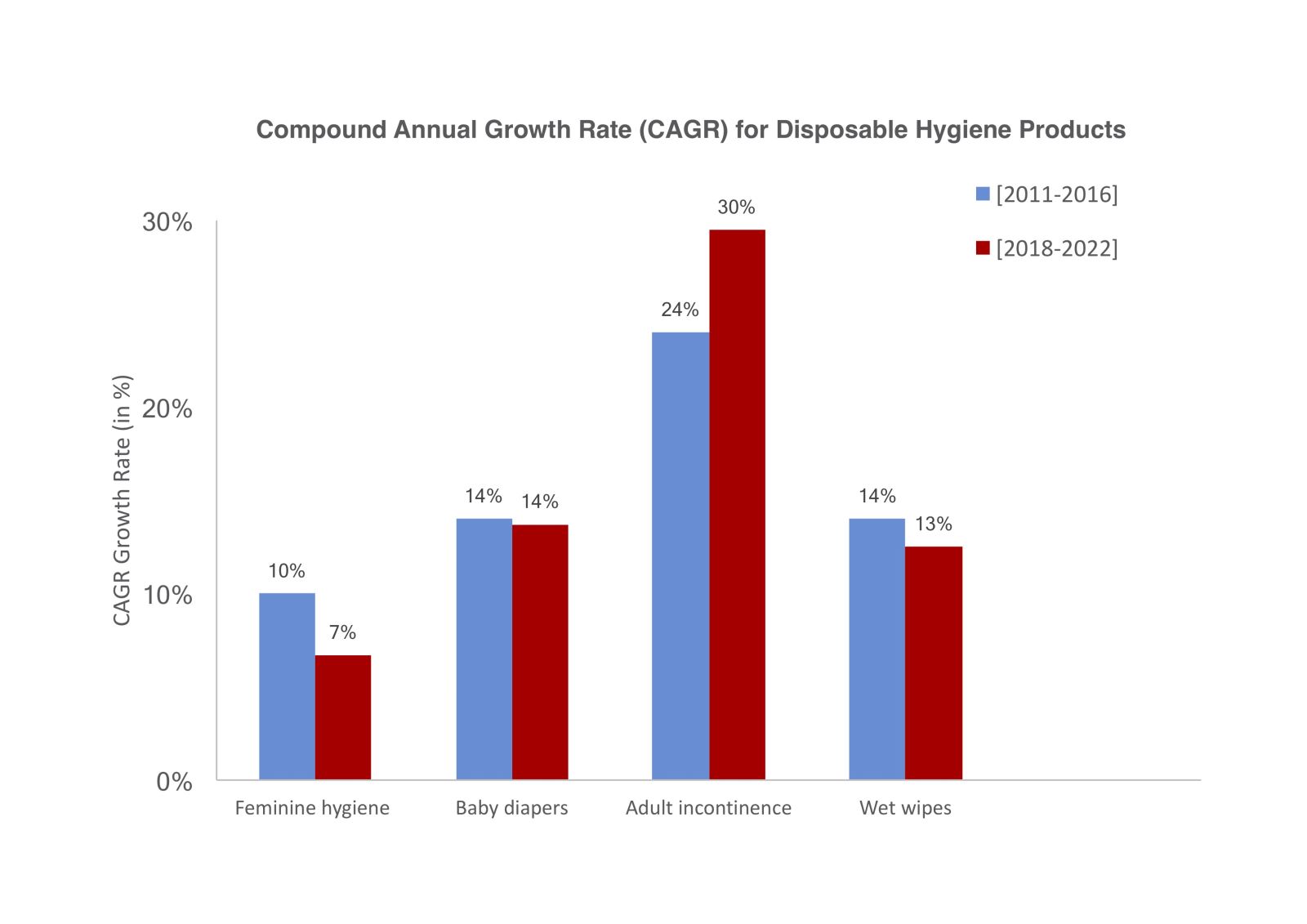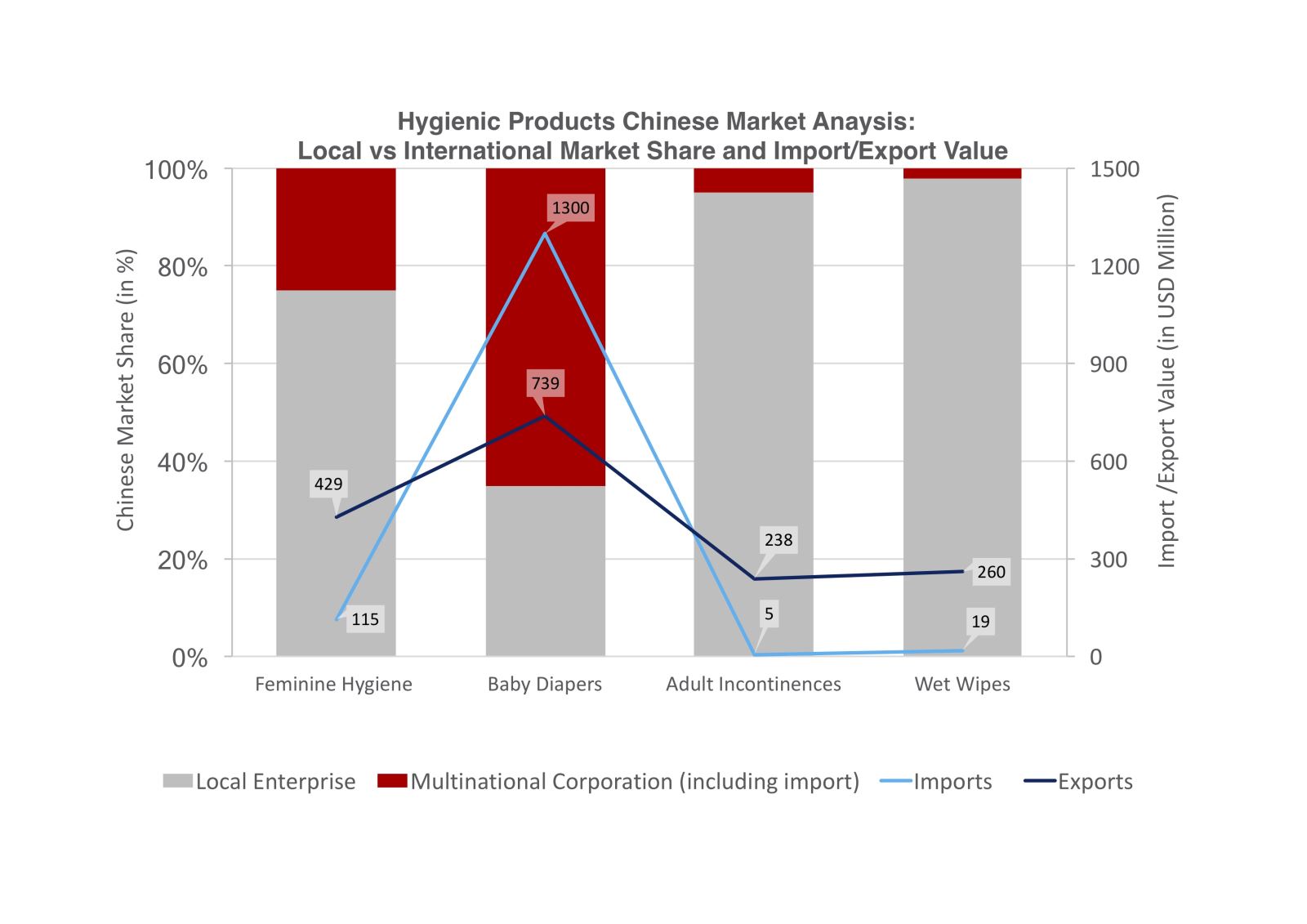The market capacity of China’s disposable hygiene products industry continues to grow steadily with more fierce market competition. The high-end consumption trend, comprehensive implementation of the two-child policy and aging population present new opportunities for the industry, which attracts investments and capacity expansion. Meanwhile, in order to maintain the competitiveness in the Chinese market, multinationals continue to increase imports of high-end products. Since the profit margins are squeezed by the changes of market landscape and rising prices of raw materials, the enterprises are forced to carry out initiatives focused on R&D, innovation, equipment upgrade, and consumption reduction. A number of enterprises stand out of the competition, others are expanding into overseas markets.
1. The investment fever is in the ascendant; it is not focused on simply copying the existing projects, but on projects upgrade.
· In 2017, the existing domestic hygiene enterprises invested to expand capacity, upgrade technology and equipment, and introduce intelligent manufacturing.
On the basis of working as OEM for overseas brands, some enterprises like Cosom and U-play launched their own brands in the developed markets.
Hengan and other leading enterprises started exploring the Southeast Asian market.
Some large pharmaceutical enterprises, textile enterprises and dairy enterprises outside the hygiene industry, such as Mayinglong Pharm, Shuangfeiren Pharm and Beingmate, entered the disposable hygiene product industry with large investment projects and advanced technologies.
Some well-known brands in e-commerce and Wechat business channels invested to build plants and started their own production.
· The existing projects of multinationals in China are progressing smoothly, with few new investments.
Year 2017 saw also the completion and operation start-up of Kimberly-Clark’s diaper production base in Tianjin, Japan Daio Paper constructed a new diaper plant in Nantong Jiangsu and expanded the production capacity of current plant, while P&G established the China digital innovation center in Guangzhou.
 |
|
Figure 1- Consumption and retail market size of disposable hygiene products in China (2016-2017) |
2. The trend of high-end disposable hygienic products continues; the upgrade of sanitary napkin products is mainly reflected in the air permeability, fitness and individualization. The natural materials are favored by consumers, while the tampon market is growing rapidly, though in a small proportion.
· Due to the consumers’ preference for imported baby diapers, the multinationals continue to
import high-end products, while the domestic brands strive to develop and upgrade products. The niche innovation and differentiated products have become the advantages in competition. The product quality of many domestic brands has reached and even exceeded that of multinational brands. However, the product stability needs to be further improved and the brand cultivation needs to be strengthened to gain the trust of consumers.
· Adult diapers products are upgraded to achieve the air permeability, deodorization, wet indication and other functions.
· The functions of wet wipes products are becoming more and more differentiated and diversified.
 |
|
Figure 2- Retail market size and progression for disposable hygiene products in China (2016-2017) |
3. Raw material suppliers are investing in production expansion to meet the growing market demands, and customizing R&D innovation to follow the trend of high-end products.
Suppliers of nonwovens, SAP, films, hot melt adhesives, closed systems, cores and packaging materials introduced advanced equipment in 2017 and expanded their production capacity to provide more materials with stable performance and high added value. They continue to develop natural and degradable materials.
4. The overall level of homemade equipment has been improved, while that of the leading enterprises has reached advanced international level. Customization, high-end orientation and differentiation are the development trends.
5. In 2017, Tianjin Yiyi and Beijing Dayuan have been successfully listed on the National Equities Exchange and Quotations, Xiamen Yanjan has been officially listed on the Shenzhen Stock Exchange GEM. While enterprises have set foot on the capital market, breaking through the capital bottleneck, their business management also has become more standard.
 |
|
Figure 3- Compound annual growth rate (CAGR) for disposable hygiene products |
6. Enterprises are actively trying the O2O, social marketing, Wechat business and other new marketing models to explore new retails. P&G, Hengan, Kidsyard, Daddybaby, LEO and other traditional enterprises explored the new marketing modes, and developed new marketing patterns. The brands in Wechat business like Care Daily have achieved remarkable results.
7. In the first three quarters of 2017, the import volume and value of disposable hygiene products continued to increase. The overall growth was higher than that in the same period of 2016. The imported diaper products experienced the highest increase, which is 19.14% (the increase rate was 7.69% at the same period of 2016). The average price of imported sanitary napkins (including tampons) increased significantly, which indicates the high-end trend of imported products and the increasing proportion of tampons. As the major import category, the total import volume of baby diapers accounted for 93.7% of disposable hygiene products and the total import value accounted for 90.8%. Its increase rate of import volume was higher than that of the overall disposable hygiene products. Since the import tariff of diapers had been reduced to 0 in China from December 1, 2017, the competition between the overseas brands and domestic brands of baby diapers is becoming more intensified.
8. As the price of raw materials is still rising, the manufacturers are faced with greater operating pressure. Therefore, the enterprises need to increase income and benefit, and reduce expenditure and cost through enterprise management to ensure the basic profit.
 |
|
Figure 4- Hygienic products Chinese market analysis : local vs international market share and import/export value |

